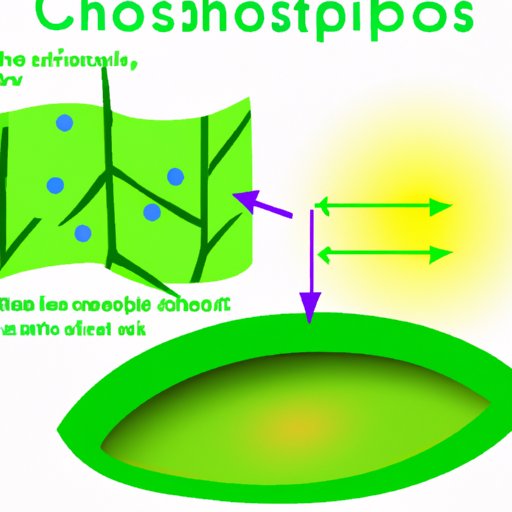Introduction
Chloroplasts are organelles found in most plant cells which play a key role in photosynthesis. They are responsible for producing energy from sunlight, carbon dioxide, and water, and are essential for the growth and development of plants. Chloroplasts are also the main source of oxygen in our atmosphere, making them an important factor in the Earth’s ecology.

Exploring the Role of Chloroplasts in Plant Cells
Chloroplasts are composed of several layers of membranes, each with its own purpose. The outer membrane is the first layer and is made up of proteins and lipids that protect the chloroplast from external damage. Inside this membrane is a fluid-filled region called the stroma, which houses various enzymes and proteins. The innermost layer is the thylakoid membrane, which contains the light-harvesting pigment molecules known as chlorophyll. These molecules capture light energy and convert it into chemical energy.
The primary function of chloroplasts is to use the energy from sunlight to convert carbon dioxide and water into sugars. This process is known as photosynthesis, and it is essential for the growth and development of plants. During photosynthesis, the energy from sunlight is used to break down the carbon dioxide and water molecules into their component parts. The energy is then used to combine these components into glucose molecules, which are used by the plant as a source of fuel.

Investigating How Chloroplasts Benefit Plant Photosynthesis
Chloroplasts are vital for the efficient functioning of photosynthesis. They contain special structures called grana, which are stacks of thylakoid membranes containing chlorophyll molecules. When light energy hits these molecules, the energy is absorbed and used to drive the reaction that produces glucose. Without chloroplasts, plants would not be able to produce the energy needed for their growth and development.
In addition to providing energy for photosynthesis, chloroplasts also help to maintain the health of the plant cell. They produce antioxidants that help to protect the cell from damage caused by environmental stressors, such as UV radiation and pollutants. By doing so, they help to keep the plant cell healthy and functioning properly.
Examining How Chloroplasts Help Plants Survive in Different Environments
Chloroplasts are highly adaptable and can adjust to different environmental conditions. For example, when exposed to high levels of light, chloroplasts will increase their production of chlorophyll to maximize the amount of energy they can absorb. Conversely, when exposed to low levels of light, chloroplasts will reduce their production of chlorophyll to conserve energy.
In addition, chloroplasts can also respond to changes in temperature and other environmental factors. As temperatures increase, chloroplasts will become more active, increasing the rate of photosynthesis. Conversely, as temperatures decrease, chloroplasts will become less active, reducing the rate of photosynthesis.
Conclusion
Chloroplasts are essential organelles found in most plant cells. They play an important role in providing energy for photosynthesis, maintaining the health of the plant cell, and helping plants survive in different environments. Understanding the biology of chloroplasts is essential for understanding how plants grow and develop.


